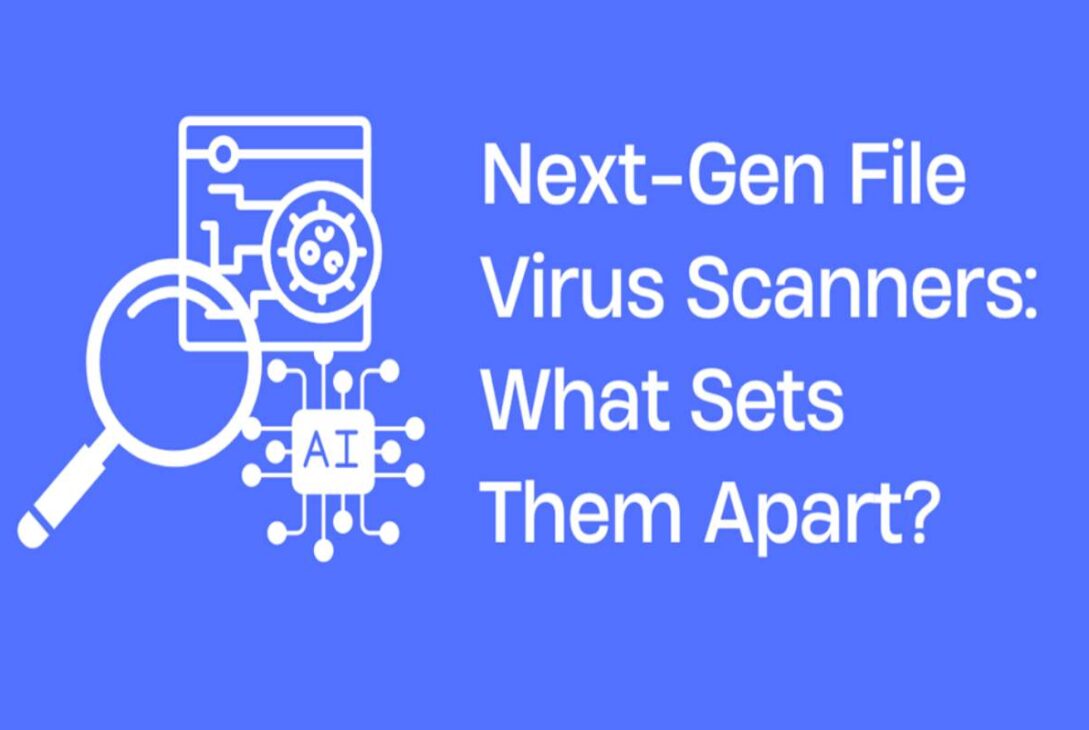Cyber threats are evolving faster and becoming more complex today. It’s challenging to protect your data and systems from these fast-evolving threats using traditional virus scanners. Next-generation antivirus software (aka. Next-gen file virus scanners) is the ideal solution for this problem. These modern virus scanners go beyond known file-based malware signatures. Unlike traditional anti-virus software, this advanced malware detection provides state-of-the-art malware protection with system-centric and cloud-based predictive analysis driven by Machine Learning (ML) and Artificial Intelligence (AI).
In this article, we will explore the technologies that set these next-gen file virus scanners apart and how they are revolutionizing cybersecurity.
Features of next-gen file virus scanners
Next-gen file virus scanners provide cutting-edge threat protection by using advanced techniques beyond traditional methods. They detect suspicious activities in real time, employing behavioral and heuristic analysis. It helps identify threats that were not detected by signature-based approaches, such as zero-day attacks and fileless malware.
These next-gen antivirus (NGAV) systems are incorporated with artificial intelligence (AI) and Machine Learning (ML). AI and ML allow them to learn from large datasets and enhance detection accuracy over time.
Additionally, these modern virus scanners protect your systems from multi-vector attacks. Multi-vector attacks are complex cyberattacks that use multiple entry points like emails and browsers to enter an organization’s systems. These next-generation virus scanners ensure comprehensive threat detection, providing simultaneous protection and securing various entry points.
NGAV scanners have access to real-time threat updates from global networks with cloud-driven threat intelligence. It allows faster new malware identification.
Automated incident response quickly isolates or blocks malicious files and neutralizes threats. It minimizes the damage without human intervention.
These features make next-gen file virus scanners an essential upgrade to outsmart modern cyber threats.
Comparing traditional vs. next-gen virus scanners
Let’s explore how next-gen virus scanners are different from traditional virus scanners.
| Aspect | Traditional anti-virus (AV) | Next-gen antivirus (NGAV) |
| Threat detection method | Mainly uses signature-based detection, which recognizes known malware by its unique code patterns. | Uses AI, machine learning, and behavioral analysis to detect both known and unknown threats, even those without signature files. |
| Protection scope | Focus on known malware and signature-based attacks. | Protects against a wider range of attacks, including zero-day exploits, fileless malware, and advanced persistent threats (APTs). |
| Response time | Reactive: requires regular updates to identify newly identified threats. | Proactive: respond to emerging threats in real time without needing constant manual updates. |
| System Impact | Can slow down the system performance due to scheduled scans and large signature databases. | No impact on the system’s performance as it continuously monitors behaviors and threats in the background. |
| Updates | Requires manual or scheduled updates to stay effective. | No frequent updates are needed. Thanks to cloud-based threat intelligence and machine learning, it continuously learns and evolves. |
| Endpoint coverage | Primarily focus on endpoints like PCs or servers. Limited cloud or mobile integration. | Covers a wider range of endpoints, including cloud-based platforms, IoT devices, and mobile devices, ensuring integrated security. |
| Multi-vector protection | Limited. | Provides multi-vector protection safeguarding endpoints from attack across different vectors (e.g., email, network, cloud) |
Impact on Cybersecurity: Future Trends and Predictions
Next-generation file virus scanners will play a vital role in future cyber security with many innovative threat detection technologies.
- AI and Machine Learning will improve predictive security. They will do it by detecting and analyzing patterns and identifying threats before they occur. Also, they improve responses to zero-day attacks.
- Faster and more accurate threat detection will be implemented across global networks. Cloud-Based Threat Intelligence enables scanners to collect real-time data from multiple sources to support this.
- These modern tools will offer comprehensive protection across various digital environments with multi-layered defense strategies.
- There will be automated threat detection systems minimizing human involvement. They support faster resolution of cyber risks.
- IoT and Mobile Device Security will be crucial. Advanced virus scanners will adapt to protect an increasing number of devices.
Conclusion
It’s challenging to protect our data and systems from sophisticated modern cyber threats using traditional anti-virus technologies like signature-based detection. Next-gen file virus scanners are the solution for this. Their state-of-the-art threat detection with AI, machine learning, and real-time behavioral analysis outsmart the modern complex cyberattacks.
They provide multi-vector protection and automated responses while minimizing system impact. Cloud integration and proactive threat detection enable next-gen scanners to provide wider security coverage across various devices and environments.
Also Read: Integrating EMI Options into a Marketing Strategy



